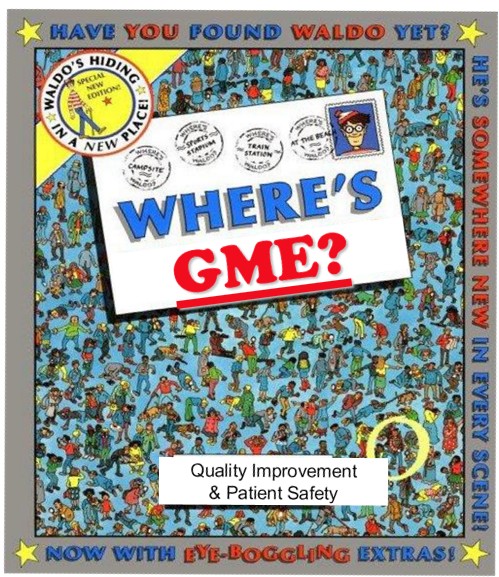Connecting education to exceptional patient care.
Connecting education to exceptional patient care.
OVERVIEW OF THE NATIONAL INITIATIVES
The AIAMC National Initiative was launched in 2007 and truly placed our organization front and center in the national landscape of medical education and quality improvement. In the spring of 2006, the AIAMC Board of Directors concluded a rigorous strategic planning process that landed with the mission of aligning GME with the C-Suite. We believed that viewing GME as a strategic asset, not just a cost center, could be a game changer…….and it was.
In the summer and fall of 2006, the Board – led by visionaries Carl Patow, MD, and then President Bill Thomas, MD, envisioned a GME and quality improvement summit. Many national groups were responding to the National Institutes of Health’s 2001 publication entitled Crossing the Quality Chasm: A New Health System for the 21st Century. This book made an urgent call for fundamental change to close the quality gap in healthcare and improve patient outcomes. What the AIAMC Board realized when they reviewed the landscape was that none of the national efforts included residents. Voila: our niche was found!

What was originally intended to be one meeting of AIAMC leaders focused on GME and quality improvement (QI) soon morphed into a twelve-month initiative consisting of four in-person meetings and monthly teleconferences of cohort groups. Nineteen individuals were chosen to participate and to choose a QI project that aligned with their hospital’s C-Suite goals. The Institute for Healthcare Improvement’s Five Million Lives campaign was selected as the framework for the first National Initiative, with member participants choosing one of its focus areas for their project. We quickly learned that twelve months was not enough time to successfully complete the QI projects, so the decision was made to extend the Initiative to 18 months. This first National Initiative, launched in March of 2007 and concluded in November of 2008, was supported by a grant from the HealthPartners Institute Foundation, where Dr. Patow was the Director of Medical Education at that time. As a result of these efforts, we developed initial findings that demonstrated the efficacy of integrating GME into patient safety and quality improvement initiatives. These findings were organized into a series of articles that were published in the December 2009 issue of Academic Medicine.

What began with an idea to align GME to the C-Suite through quality improvement efforts has grown into a nationally recognized and highly respected cornerstone of the AIAMC. The AIAMC National Initiative was and is the only national and multi-institutional collaborative of its kind in which residents lead multidisciplinary teams aligned to their institution’s strategic goals. Seventy-two hospitals and health systems and over 1,650 individuals have participated in the AIAMC National Initiatives since 2007 driving change that has resulted in meaningful and sustainable outcomes improving the quality and safety of patient care.

National Initiative I Meeting One – March 2007 in Austin, Texas
The years and themes of the AIAMC National Initiatives have been as follows:
Starting with National Initiative VI, the AIAMC formed a National Advisory Council to help inform and guide our efforts. Senior leaders from multiple organizations have participated, including AACOM, AAMC, ACCME, ACGME, AHA and AMA. What placed us on the medical education and quality map years ago continues to earn the respect and support of our national partners.
For more information about the AIAMC and our National Initiatives, contact Kimberly Pierce Burke, Executive Director via email kimberly@aiamc.org.
